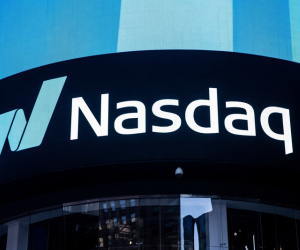From its founding in 1971 as the first electronic stock market to its establishment as the home of tech giants like Apple, Amazon, and Nvidia, NASDAQ has redefined global finance. This article reviews the key milestones, visionary strategies, and digital revolutions that turned NASDAQ into the most technological market in the world. Whether you are an investor, analyst, or fintech enthusiast, this analysis provides an in-depth view of the forces driving NASDAQ's history.

Digital Birth of NASDAQ and Its Early Disruption
NASDAQ was founded on February 8, 1971, by the National Association of Securities Dealers (NASD) as the world's first electronic stock market. Unlike the traditional physical trading floor of the New York Stock Exchange, NASDAQ was born automated, connecting buyers and sellers through a computerized quotation system. It was a paradigm shift: goodbye to chalkboards and hand signals; hello to speed and real-time data.
Initially, NASDAQ operated as a quotation system for OTC (over-the-counter) securities, but it quickly gained ground due to its technological innovation and accessibility. By eliminating the need for a physical floor, it reduced costs and opened the market to a broader base of retail and institutional investors.
Challenging the Status Quo
In the late 70s and 80s, NASDAQ began attracting emerging companies, especially in technology and biotechnology. Microsoft's IPO in 1986 was a turning point: it proved that NASDAQ could compete with the NYSE for major listings. Thus, it evolved from a mere price quotation platform to a full-fledged stock market.
1971: NASDAQ launches as the first electronic market
1975: Introduces automated trading capabilities
1980s: Gains prestige with IPOs of Apple and Microsoft
1987: Implements real-time quotations
1991: Surpasses 5,000 listed companies
NASDAQ's commitment to innovation allowed it to scale quickly and differentiate itself from traditional exchanges. It became the ideal platform for ambitious startups and booming sectors that valued agility over tradition.
Technological Boom, Dot-Com Bubble, and Reinvention
The 1990s were the golden decade for NASDAQ. With the explosion of the internet, tech companies flooded the exchange with initial public offerings. From Yahoo to Amazon, the platform became synonymous with innovation. In 1999 alone, over 500 companies went public on NASDAQ, including many that would define the dot-com era.
But the rapid growth came at a cost. The bursting of the dot-com bubble in 2000 led to a massive correction: the NASDAQ Composite index lost nearly 80% of its value by 2002. Despite the blow, this crisis spurred a reevaluation of listing standards, risk assessment, and market expectations. NASDAQ emerged from the storm as a more disciplined and resilient market.
Global Expansion and Regulatory Evolution
In the 2000s, NASDAQ made a strong push for internationalization. In 2005, it merged with Instinet, in 2007 acquired OMX, and established itself as a transatlantic financial player. At the same time, it adopted SOX (Sarbanes-Oxley) reforms to strengthen corporate governance and restore investor confidence following the Enron and WorldCom scandals.
1996: The Netscape IPO triggers the dot-com frenzy
2000: The bubble bursts and drags the market down
2005: NASDAQ acquires Instinet's INET platform
2007: Merges with OMX to expand globally
2010: Launches NASDAQ OMX PSX, an exchange focused on price improvement
This period redefined NASDAQ's identity: it stopped being just a tech exchange and became a global multi-asset marketplace. It expanded its data services, analytical tools, and compliance systems, solidifying its leadership in global financial market infrastructure.
Era of AI, ESG Leadership, and the Future of Trading
During the 2010s and beyond, NASDAQ transformed once again—this time into a data-driven, AI-powered financial ecosystem. It launched Nasdaq Market Technology, providing matching engines and surveillance tools to more than 130 exchanges and financial institutions worldwide. Today, NASDAQ not only facilitates trading; it is the digital backbone of global markets.
It has also taken on a leadership role in sustainability and governance (ESG). Through initiatives like its ESG Data Hub and sustainable reporting standards, NASDAQ seeks to modernize corporate accountability, promoting transparency and ethical capital allocation.
Next-generation Innovation and Resilience
After COVID-19, NASDAQ doubled down on automation and operational resilience. It is applying machine learning for fraud detection, blockchain for market integrity, and cloud infrastructure for global scaling. Its innovative approach positions it not just as an exchange but as a lab for the financial future.
2015: Launches Nasdaq Financial Framework
2020: Transition to remote trading due to the pandemic
2021: Introduces ESG requirements for listed companies
2023: Launches AI-driven risk management platforms
Future: Integration of blockchain and decentralized trading
From challenger to leader, NASDAQ's rise is a manual on how speed, technology, and vision can reinvent an entire industry. In a world where markets, data, and code converge, NASDAQ stands as the digital heart of tomorrow's financial system.




